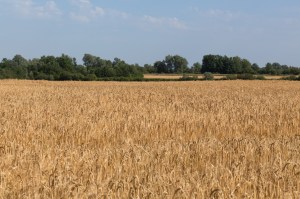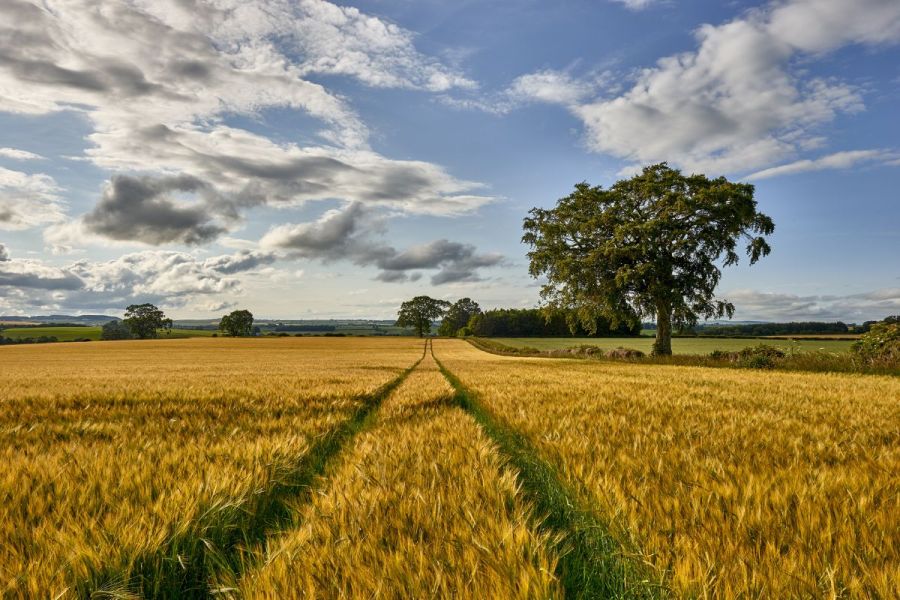A new winter feed barley has sailed onto the scene, with a strong tail wind docking it securely at the top of the two-rows for yield and rounded performance. CPM explores what’s making Limagrain’s latest variety LG Caravelle turn heads.
“We’re seeing the next step in on-farm varietal security for farmers.”
By Melanie Jenkins
It might not be common knowledge – the kind that could come in useful at a pub quiz – but a caravelle (or caravel) is a small 15th century Portuguese sailing ship, and more recently a fairly pricey Volkswagen van. However, Limagrain has brought a new face to the name in the form of a winter barley that has the potential to, quite literally, rock the feed barley boat.

LG Caravelle’s yield potential is being bolstered by its disease resistance profile, says Ron Granger.
The company’s latest two-row winter feed barley LG Caravelle hails a big step in the breeding progress of these types, according to the firm’s Ron Granger. “If you look at what breeders have been doing with two-row feed varieties over the past 10 years, they’ve increased yield, improved disease resistance and produced varieties with good grain attributes. The bar has been raised so much in the past few years that they’ve basically caught up with hybrid varieties.”
And with a UK yield of 106% on the AHDB Recommended List, the figures speak for themselves. “It’s the highest yielding two-row feed and is equal to the highest yielding hybrids. But more importantly, Caravelle has shown consistency in its performance across different regions and seasons,” says Ron.
“The past few years have been difficult, with dry springs pushing the season back, but Caravelle has demonstrated a yield of 109% in the East region, which is three points ahead of the closest hybrid, making it an interesting option for growers in that area.”
Although John Miles of Agrii has only seen Caravelle in Agrii trials for the past year, the variety has already made an impression. “We put the variety into trial last year and generally it looks very good all round.”
Clive Tuffin of Pearce Seeds is based in the South West and has been looking at Caravelle in Limagrain’s trials over the past couple of years. “Everything I’ve seen of the variety has looked nice and clean, it’s had consistent yield figures and has performed well across all regions. All barley we produce in the South West is for feed and as Caravelle looks to be a good, high yielding feed type variety. It should be well suited to the area.”
The fact that the newcomer’s yield is competing with hybrids is of particular interest to John. “There’s been a jump in two-row yields, and perhaps some of the hybrids are getting a bit long in tooth in terms of performance or disease resistance potentially dropping away.”
Ron believes Caravelle’s yield potential is being backed up by its specific weight, where often the two characteristics have an inverse relationship. “Specific weight is important no matter what, and Caravelle’s is very high at 71.8kg/hl. It’s one of the best available and is only surpassed by KWS Cassia.”

Clive Tuffin is based in the South West and has been looking at Caravelle in Limagrain’s trials over the past couple of years.
Tom Barker of Limagrain feels that specific weight has become a more important factor in recent years. “At the end of the day, the fact Caravelle’s got a strong specific weight means there’s likely to be more in the shed for farmers to sell.”
Caravelle’s yield potential is also being bolstered by its disease resistance profile, says Ron. “The variety has a 7 for mildew, a 6 for rhynchosporium and a 5 for net blotch,” he explains. “Although there’s no rating on the RL yet, our data indicates the variety scores a 7 against brown rust, which is high against this disease.”
The newly recommended variety’s rhynchosporium resistance rating is especially appealing to Clive. “In the South West, we try to only have varieties with good resistance to the disease and its 6 rating is about where we want it to be.”
But John feels the past few seasons may not have challenged disease resistance characteristics in varieties that much. “In the past few years we haven’t really seen high pressure from rhynchosporium or net blotch, so it’s been quite challenging to get reliable ratings for those diseases. But despite this, we do feel that Caravelle is good enough.
“And we’re seeing that brown rust can be more problematic and is one of the biggest challenges further south and in the east, says John, confirming the Agrii data seems to back up Limagrain’s data on the disease.
 The variety also has resistance to barley yellow mosaic virus, adds Limagrain’s Sophie Buon, giving it all round disease resistance. The culmination of this can be seen in its untreated yield, which at 89% gives growers security, she adds.
The variety also has resistance to barley yellow mosaic virus, adds Limagrain’s Sophie Buon, giving it all round disease resistance. The culmination of this can be seen in its untreated yield, which at 89% gives growers security, she adds.
Agrii has run its own trials looking at this. “We’ve also put Caravelle into untreated trials, and it’s generally done well but so far that’s only based on one year of data,” says John.
The variety exhibits short straw like LG mountain, has a good lodging and brackling capability, and comes in with an early maturity, says Ron.
Agrii trialled Caravelle at eight sites, situated the full length of the country, from Dundee in Scotland to Saltash in Cornwall, adds John. “We’ve put the variety into dedicated lodging strips where it’s in high-pressure situations and it didn’t perform badly by any means. It’s certainly not weak strawed at all, but there are other varieties with stronger straw.”

Tom Barker feels that specific weight has become a more important factor in recent years.
For those growers utilising barley in the fight against blackgrass, Caravelle is competitive in these situations, says Ron. “The story has always been about hybrids being used competitively against blackgrass, but Caravelle has real potential here.”
Agrii has conducted its own blackgrass trials and generally finds six-row hybrids to be very competitive because they grow so aggressively in spring and, because they’re tall and competitive, blackgrass heads remain below the canopy. This causes blackgrass ears to be smaller than if they overtopped the crop, according to John.
“Conventional barleys do help against blackgrass because of their fast growth habit, but their standard height means blackgrass ears come out of the top of the canopy, and generally two-rows aren’t as competitive against the grassweed,” he says.
“English barleys tend to be slower out of the block than French ones, with the exception being California, which, a few years ago earned a three-star rating on Agrii’s scale for competitiveness against blackgrass, making it on par with a conventional six-row.
“But based on one year of data, Caravelle has a preliminary three-star rating, so it’s showing promise in terms of blackgrass competition,” he adds. “However, in high pressured situations we’d still advise growing a hybrid because of the extra competition it provides.”
But how did Limagrain produce a variety like Caravelle? “We focused on treated yield, specific weight and disease,” explains Sophie. “Using genomic selection we can predict the value of these elements at an early stage in the breeding process, helping us to focus on the best varieties to bring to market.
“Caravelle heralds the arrival of this new breeding in the market and there will be a lot of new varieties coming through behind it. Because of the technique, this will be happening much faster, instead of taking eight years to bring a variety to market, it’s now taking about six years.”
Around 30,000 potential varieties are pre-screened for their prospective traits before 200 to 300 crosses are produced. “It’s important we still take varieties to field because, as brilliant as the new technology is, there’s still a lot of value in combining this with human field experience,” says Sophie.
“To have produced a variety like Caravelle just shows the technology is working and that breeding is becoming more efficient and delivering better varieties for farmers.”

While conventional barley can help against blackgrass because of its fast growth habit, generally hybrids are better, especially in high pressured situations.
The next stages of the breeding programme are focused on creating varieties that are adapted to cope in different climates, she says. “This will particularly help varieties cope with disease and insects, and I think this is going to become more important in the UK. We’re also aware that markers for current disease resistances could change, so we’re constantly looking at these.
“But one of the next targets is to produce a two-row winter barley that’s tolerant to barley yellow dwarf virus. This won’t be a cut and dried solution but would make management a lot easier for farmers.”
As this is Caravelle’s first year on the RL, it’s also the first year of commercial availability but there’s over 1000ha of C2 seed in the ground, says Tom. “It’s a variety that a lot of growers may want to try as it’s got a headline yield and no disease weaknesses.”
Tom feels that growers who’ve been growing hybrids might also be interested in returning to two-rows because of Caravelle’s performance. “Hybrids account for about 20-25% of the winter barley market but this could change. Plus, we’re currently testing to see if Caravelle could be suitable for more than just the feed market.”
Ron feels that the portfolio of two-row winter barleys on offer is exciting. “We’re seeing the next step in on-farm varietal security for farmers and these types are proving to be an option on farm again.”
This article was taken from the latest issue of CPM. Read the article in full here.
For more articles like this, subscribe here.
Sign up for Crop Production Magazine’s FREE e-newsletter here.




